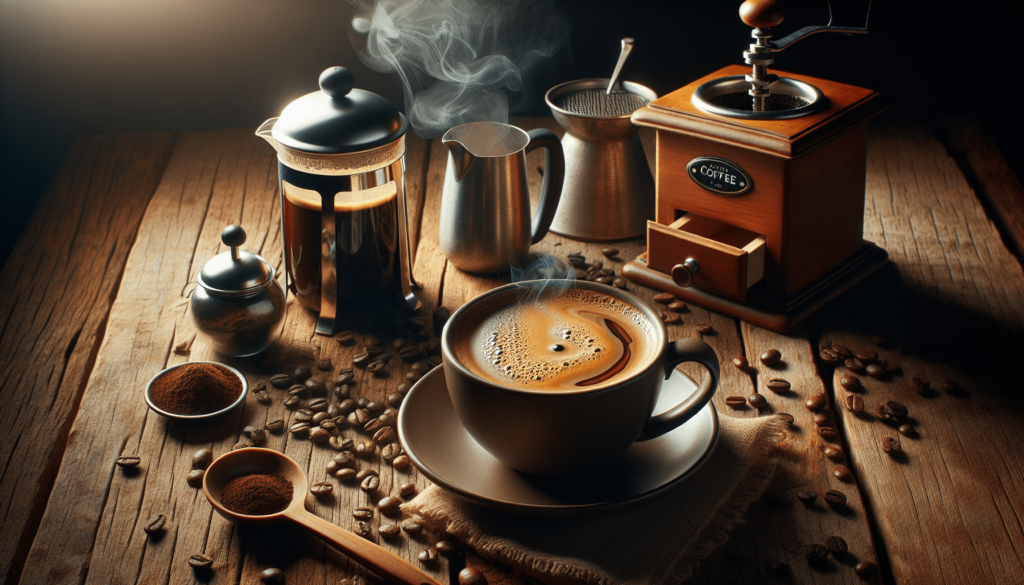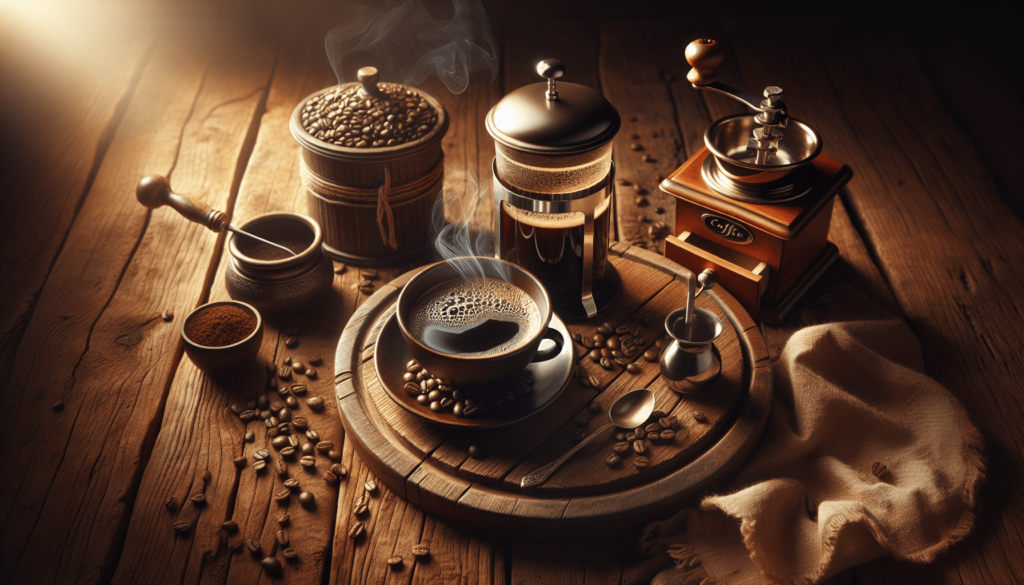Have you ever wondered how to get the best tasting coffee? Maybe you’ve had experiences where your homemade brew just didn’t measure up to what you’d get at your favorite coffee shop. Don’t worry, you’re not alone. Crafting the perfect cup of coffee is both an art and a science that involves various factors. From the type of beans to the brewing method, each element plays a crucial role in creating that heavenly beverage you crave each morning.

Choosing the Right Coffee Beans
The foundation of great coffee starts with the beans. Understanding the characteristics of different types of beans can drastically improve the taste of your coffee.
Arabica vs. Robusta
Arabica and Robusta are the two main types of coffee beans you’ll encounter.
| Bean Type | Description | Flavor Profile |
|---|---|---|
| Arabica | Grown at higher altitudes, more sensitive to growing conditions | Smooth, mild, sometimes fruity or floral |
| Robusta | Grown at lower altitudes, more resistant to pests and disease | Strong, bold, often described as bitter |
When aiming for the best taste, Arabica beans are generally preferred due to their smoother and more complex flavors. However, some people enjoy the robust and intense flavor of Robusta.
Single-Origin vs. Blends
Single-origin beans come from one geographic location, offering a unique flavor characteristic of that area. Blends mix beans from multiple places to create a balanced taste.
| Type | Description | Flavor Profile |
|---|---|---|
| Single-Origin | Sourced from one particular region | Distinct, reflects local terroir |
| Blends | Mixture of beans from different regions | Balanced, consistent |
Single-origin can offer a unique and pure experience, while blends provide a balanced and consistent flavor. Depending on your taste preference, you can choose either for the best coffee experience.
The Importance of Freshness
Freshness plays an essential role in the taste of your coffee. Stale beans or grounds can make your coffee dull and lifeless.
Roasting Date
Always check the roasting date on the coffee bag. Beans are at their peak flavor within two to four weeks post-roast.
Grinding Just Before Brewing
Grinding your coffee just before brewing it ensures maximum freshness. Pre-ground coffee loses its aroma and flavors quickly. Investing in a good quality grinder can make a significant difference in the taste of your coffee.
Proper Storage
Correct storage methods can help maintain the freshness and flavor of your coffee beans.
Airtight Containers
Store your coffee in airtight containers to keep it away from air, moisture, and light.
Storage Location
Place your coffee in a cool, dark place, away from direct sunlight and any sources of heat. Avoid storing coffee in the refrigerator; it can absorb other odors and moisture.
Water Quality and Temperature
Good water quality is crucial for a great cup of coffee, as coffee is 98% water.
Filtered Water
Using filtered water can reduce impurities that may affect the flavor of your coffee. Hard water can lead to undesirable tastes, while soft water might not extract the coffee well.
Optimal Temperature
Brewing coffee at the right temperature is key. Aim for water temperatures between 195°F and 205°F (90°C to 96°C).

Brewing Methods
Various brewing methods have their own characteristics and pros and cons. Here are popular techniques you might consider.
Drip Coffee Maker
A classic choice for many, drip coffee makers are convenient and easy to use.
| Pros | Cons |
|---|---|
| Consistent, easy to use | Limited control over variables |
French Press
The French press method steeps coffee grounds in hot water before pressing them out.
| Pros | Cons |
|---|---|
| Rich, full-bodied flavor | Requires a coarser grind, sediment can occur |
Pour-Over
Pour-over involves manually pouring hot water over coffee grounds, usually in a conical dripper.
| Pros | Cons |
|---|---|
| Full control over brewing variables | Requires more attention and time |
Espresso Machine
Espresso is a concentrated coffee brewed by forcing hot water through finely-ground coffee.
| Pros | Cons |
|---|---|
| Intense, full-bodied flavor, quick | Expensive, requires skill |
AeroPress
An AeroPress uses air pressure to push hot water through coffee grounds.
| Pros | Cons |
|---|---|
| Versatile, portable, easy to clean | Small batch size, learning curve |
Cold Brew
Cold brew is made by steeping coarse coffee grounds in cold water for an extended period.
| Pros | Cons |
|---|---|
| Smooth, mellow flavor, no heat needed | Takes a long time, requires planning ahead |
Coffee-to-Water Ratio
The ratio of coffee to water can significantly impact the taste of your brew.
Golden Ratio
A general guideline is the “golden ratio” of 1:16, meaning one part coffee to 16 parts water. For example, for 8 grams of coffee, you’d use 128 grams of water. Adjust based on your taste preferences.
Grind Size and Consistency
Matching the grind size to your brewing method is essential for optimal extraction.
Medium Grind
This is suitable for drip coffee makers.
Coarse Grind
A coarse grind works best for French Press and Cold Brew.
Fine Grind
Fine grind is ideal for espresso machines.
Consistency
Consistent grind size helps ensure even extraction. Uneven grind sizes can lead to a poorly balanced cup with both over-extracted and under-extracted flavors.
Specialty Additions
Sometimes, adding a bit of creativity can elevate your coffee experience.
Spices
Add a pinch of cinnamon, nutmeg, or cardamom to your grounds before brewing for a warm, aromatic twist.
Sweeteners and Milks
Honey, flavored syrups, and plant-based milks can also enhance the flavor of your coffee.
Flavor Infusions
You can try infusing your coffee with flavors like vanilla or coconut by adding a few drops of extract to your cup.
Experimentation
Don’t be afraid to experiment with different beans, grind sizes, and brewing methods. Keeping a coffee journal can help you track what you like and don’t like.
Conclusion
Crafting the best-tasting coffee involves attention to many details, from bean selection to brewing methods. By understanding and manipulating each variable, you can create a coffee experience tailored to your preferences. Start with the basics and slowly experiment; you’ll be well on your way to the perfect cup. Enjoy your journey to becoming a home barista!
